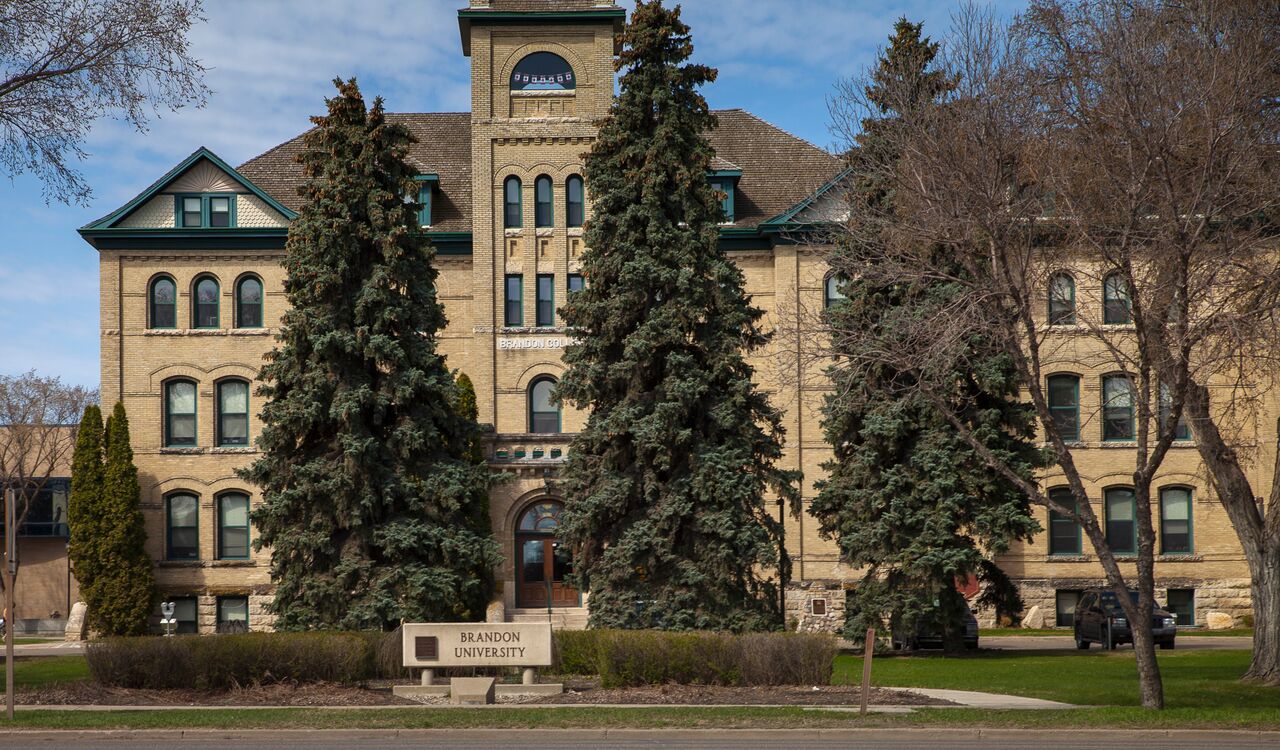Annual economic impact of Brandon University tops $417 million
 July 17, 2017
July 17, 2017
BRANDON, Man. —Brandon University (BU) is a significant economic driver of the city and is responsible for more than $417 million in economic activity in Brandon and Westman every year, according to a new BU study, which also found that the university created 927 jobs in the province.
“It is impossible to calculate the full impact that BU has on our city’s social and cultural scene,” says Dr. Steve Robinson, BU’s incoming Interim President. “Brandon University attracts both youth and educated professionals to Brandon, who contribute to our region in many important non-economic ways, from volunteering to voting. This is the best estimate we can give for the economic side of the equation — the hard dollars that BU brings to Brandon every year.”
The economic impact study was led by Dr. Kim Lemky, in collaboration with the BU Institutional Data Analysis Unit (IDA). They applied two separate methods of analysis that result in unique outputs and the ability to compare BU’s impact to other post-secondary institutions.
Using the Sudmant method, one of the standard economic analyses for universities in Canada, the team calculated an annual economic impact of $417.1 million for the university in the 2014–15 academic year. That includes direct, indirect and induced value that Brandon University is responsible for generating.
While it is relatively straightforward to tally up the amount that Brandon University itself spends in the local economy every year, and to add in the effect of faculty, staff and student spending, Brandon University also attracts tens of thousands of visitors, contributes to local industry through innovation and research, and is responsible for increasing the lifetime earnings of its alumni.
“University graduates with a bachelor’s degree earn thousands of dollars more every year than people without a degree, and when you consider that the vast majority of BU alumni stay within the region, the value of a BU degree is compounded,” Dr. Lemky said, adding that data from BU Alumni Relations show that about three-quarters of graduates from BU stay to live and work in the region.
The Sudmant method used in the study also highlights Brandon University’s research contributions, including supporting three research institutes and educating the second-highest number of graduate students of Manitoba universities.
“Research at Brandon University creates new knowledge, applies knowledge in new ways, and comes up with industry-focused solutions that improve other sectors of the economy,” Dr. Lemky said. “This is one of the key ways through which Brandon University helps drive the local and regional economy.”
For instance, last year, Brandon University celebrated more than $6.25 million in federal Tri-Agency research grants awarded to researchers in recent years.
Along with using the Sudmant method, the team led by Dr. Lemky conducted a second analysis using the Canadian Input/Output Model, which provides calculated impacts in specific areas.
The Canadian I/O Model found that Brandon University contributed $122.9 million in total gross output to the Manitoba economy through 2014–15, added $81.4 million to GDP, generated 46.8 million in labour income, created a total of 927 jobs, and produced $5.1 million in indirect taxes — even when the added gains from research and alumni activity used in the Sudmant method are subtracted.
“This very conservative estimate doesn’t include BU’s research or alumni impact, which are two areas in which we do very well,” Dr. Robinson said. “In particular, our faculty have had tremendous recent success in securing federal research dollars for Brandon. It is gratifying to see that BU is growing by building on its roots as an undergraduate teaching university to now further manifest its benefits to the region.”
Brandon University also plays an outsized role in attracting young people to the city. Data included in the economic impact report found that fewer than a quarter of BU’s students graduated from a Brandon high school. Nearly two-thirds came from elsewhere in Manitoba, with the remainder coming from out-of-province or from another country.
Overall, the study finds that BU contributes an economic impact that is consistent with its size as a post-secondary institution.
“It is the first time in many years that a study of this type has been done for Brandon University and it shows that this university has comparably significant economic impacts on the city and the region,” said current BU President Dr. Gervan Fearon. “Every dollar in provincial funding provided to Brandon University generates more than $11 in economic impact — an outstanding return on investment by any measure and testimony to the transformative impact and economic value of post-secondary education and research in our region.”
Economic impact is only one measure of the university’s complete value to the area, he added.
“When coupled with the athletic, artistic and cultural contributions that our faculty, staff and students bring to the community and society, it truly shows that Brandon University is an extraordinary asset that strengthens the attractiveness of our region as a place to live, to conduct business, and to invest in innovation as well as to study,” Dr. Fearon said.
“This analysis ultimately shows that Brandon University has a bright and important future ahead, which supports the quality of life and standard of living throughout Brandon, southwestern Manitoba and the province.”
The complete report is available online at BrandonU.ca/Economic-Impact

![]() September 28, 2024
September 28, 2024







![]() September 28, 2024
September 28, 2024![]() September 27, 2024
September 27, 2024![]() September 26, 2024
September 26, 2024![]() September 25, 2024
September 25, 2024![]() September 24, 2024
September 24, 2024![]() September 23, 2024
September 23, 2024
![]() July 18, 2017
July 18, 2017
![]() July 17, 2017
July 17, 2017
![]() July 17, 2017
July 17, 2017
![]() July 15, 2017
July 15, 2017
![]() July 15, 2017
July 15, 2017